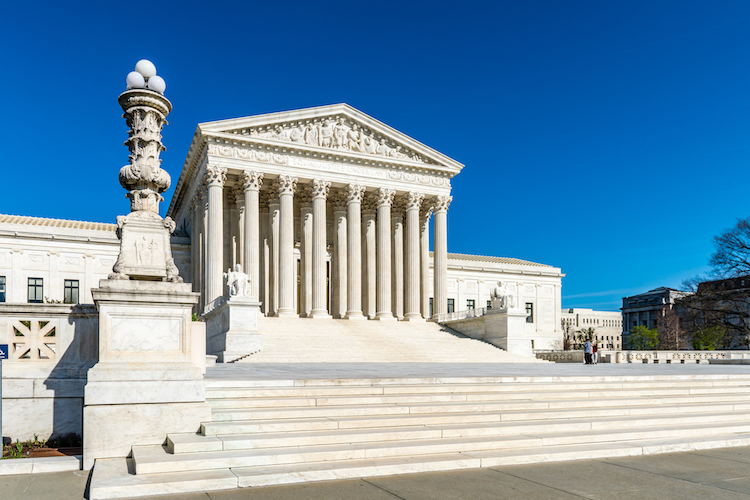
The Supreme Court failed to clarify a key aspect of fraud claims in Lorenzo v. SEC.
A battle has raged in the U.S. Supreme Court for decades over the difference between primary liability and aiding-and-abetting liability under Rule 10b-5 and other fraud provisions in the federal securities laws. The difference between the two kinds of securities fraud liability matters because private plaintiffs have a claim against a primary actor but do not have a claim against an aider and abettor. The government may sue both.
In its most recent securities fraud decision, Lorenzo v. Securities and Exchange Commission, the Supreme Court continued the struggle to define the scope of primary liability. After several decisions narrowing the category of primary actors, the Court tacked back toward the plaintiff’s side in Lorenzo, but the decision resolved little about the difference between primary and aiding-and-abetting liability and created new questions.
The path to Lorenzo began in 1994, when the Supreme Court held that the Securities Exchange Act of 1934 did not authorize a claim for aiding and abetting a securities law violation. Congress responded the next year and made the judgment that the U.S. Securities and Exchange Commission (SEC), but not private parties, would have the authority to assert an aiding-and-abetting claim.
The difference between primary liability and aiding and abetting for a Rule 10b-5 violation therefore took on critical importance. A plaintiff in a private securities action under Rule 10b-5, including a class action, could assert a claim against a primary actor but could not sue a person for aiding and abetting. The SEC could assert a claim for aiding and abetting, but it has shown a preference for bringing primary liability charges.
Private plaintiffs responded by seeking to expand the scope of primary liability under Rule 10b-5(a) and (c), two of the more general subparts of the main fraud rule in the 1934 Act. The SEC also broadened the concept of primary misconduct when alleging violations of Rule 10b-5 and the anti-fraud provisions in section 17(a) of the Securities Act of 1933.
The Supreme Court initially turned back those efforts, citing the need to maintain a separation between primary liability and aiding and abetting. In a 2008 case, Stoneridge Investment Partners, LLC v. Scientific-Atlanta, Inc., the Court held that a company’s suppliers did not have primary liability for false statements in the company’s public financial reports when the suppliers’ dealings with the company were not known by the public and were too remote from the company’s public misstatements.
Two years later, Janus Capital Group, Inc. v. First Derivative Traders involved the potential liability of an investment adviser for allegedly false statements in the prospectus of a mutual fund. There the Court limited primary liability under Rule 10b-5 to the “maker” of a false statement: the person or entity with ultimate authority and control over the content, timing, and method of communicating the statement. The funds, not the adviser, were the makers of the allegedly false statements, even though the investment adviser participated in the drafting of the funds’ prospectuses and had significant influence over the funds.
The federal courts of appeals disagreed about the proper application of Janus. Several lower courts and the SEC read Janus to apply only to allegations that a misstatement violated Rule 10b-5(b), expanding primary liability under other parts of Rule 10b-5 and section 17(a). Other courts held that a claim under subparts (a) or (c) of Rule 10b-5 could not circumvent Janus and must be based on conduct beyond misrepresentations or omissions actionable under Rule 10b-5(b).
That is where things stood before the court of appeals decision in Lorenzo. Lorenzo was the director of investment banking at a broker-dealer that was helping to sell convertible debentures of a company. His boss prepared and approved a materially false message about the offering and instructed Lorenzo to send the email to two possible investors, which he did. The U.S. Court of Appeals for the D.C. Circuit concluded that Lorenzo did not have primary liability under Rule 10b-5(b) as a Janus maker of the false statements because his boss had ultimate authority over them but then found Lorenzo primarily liable under broader interpretations of other subparts of the Rule and section 17(a)(1).
The Supreme Court affirmed the D.C. Circuit. Justice Breyer’s majority opinion characterized Lorenzo’s conduct as dissemination of the misstatements and concluded that dissemination of a false or misleading statement with intent to defraud can fall within subpart (a) or (c) of Rule 10b-5 and corresponding parts of section 17(a) even if the disseminator did not “make” the statement. By sending emails he knew to be untrue in his capacity as an investment banker, Lorenzo employed a device to defraud and engaged in an act that operated as a fraud. The expansive language of Rule 10b-5 readily embraced Lorenzo’s conduct, and the different subparts of the Rule overlap and are not mutually exclusive.
Unfortunately, the Court’s majority opinion in Lorenzo was poorly and inconsistently reasoned and will perpetuate discord in the lower courts. Its most significant defect was that it did little to accomplish the main goal of separating primary liability from aiding and abetting. The decision effected a refinement and modest expansion of primary liability set in Janus but never satisfactorily explained how primary liability differed from aiding and abetting or why Lorenzo was an aider and abettor of his boss in making the false statements but was a primary violator of other subparts of Rule 10b-5.
The majority therefore failed to respect the congressional plan laid out in the securities statutes. Congress commanded that securities fraud litigation distinguish between primary actors and aiders and abettors, and it gave statutory guidance for making the distinction. Statutes specify that an aider and abettor must provide “substantial assistance” to another person who violated the securities laws.
If substantial assistance is required for aiding and abetting, primary liability must require more. If substantial assistance were enough for primary liability, no difference between a primary actor and an aider and abettor would exist. A person substantially assisting another person would be liable both as an aider and abettor and as a primary actor for the same violation of Rule 10b-5 or section 17(a). Congress’s adoption of aiding and abetting provisions would have served no purpose. The majority did not discuss the difference between substantial assistance and the kind of conduct justifying primary liability.
A further problem with Lorenzo is that its legal reasoning was confusing and sent inconsistent messages to lower courts and litigants. The opinion was clear that subparts (a) and (c) of Rule 10b-5 can be read to impose primary liability on conduct that looked like aiding and abetting the making of a false statement, but Lorenzo did not overrule Janus and, in the end, narrowly characterized the conduct of Lorenzo that permitted primary liability. The majority opinion explicitly said that “Janus would remain relevant (and preclude liability) where an individual neither makes nor disseminates false information.”
This passage suggests that the act of dissemination was the feature of the case that was essential to the difference between primary misconduct and aiding and abetting. Dissemination was the transmission, distribution, or communication of another person’s false statement directly to a prospective investor. This was conduct disclosed to participants in the securities markets, unlike the conduct found not to trigger primary liability in Stoneridge and Janus. Lorenzo did not extend to other kinds of deceptive conduct in connection with misstatements.
Even with this extension of primary liability to makers and disseminators, much remains unknown. The lower courts still lack guidance on the application of Janus and the scope of primary liability in a wide variety of situations. Plaintiffs and defendants continue to have too much room to litigate over which persons should have primary liability for securities fraud.
For example, a disseminator comes into the picture after a maker’s statement is fully formed. Lorenzo did not appear to alter the application of Janus to people who are involved in preparing a public statement but who do not transmit it and are not disclosed to investors. Those people include employees providing company information for public reports, drafters, lawyers, reviewers, and approvers. Janus explicitly rejected an SEC test that would have imposed primary liability on a person who provided information for another person’s statement or who participated in the drafting of a statement. Whether courts will view Lorenzo as a license to reinterpret the Janus limitation on primary liability for this category of persons remains to be seen.
This essay is part of a series, entitled The Supreme Court’s 2018-2019 Regulatory Term.




